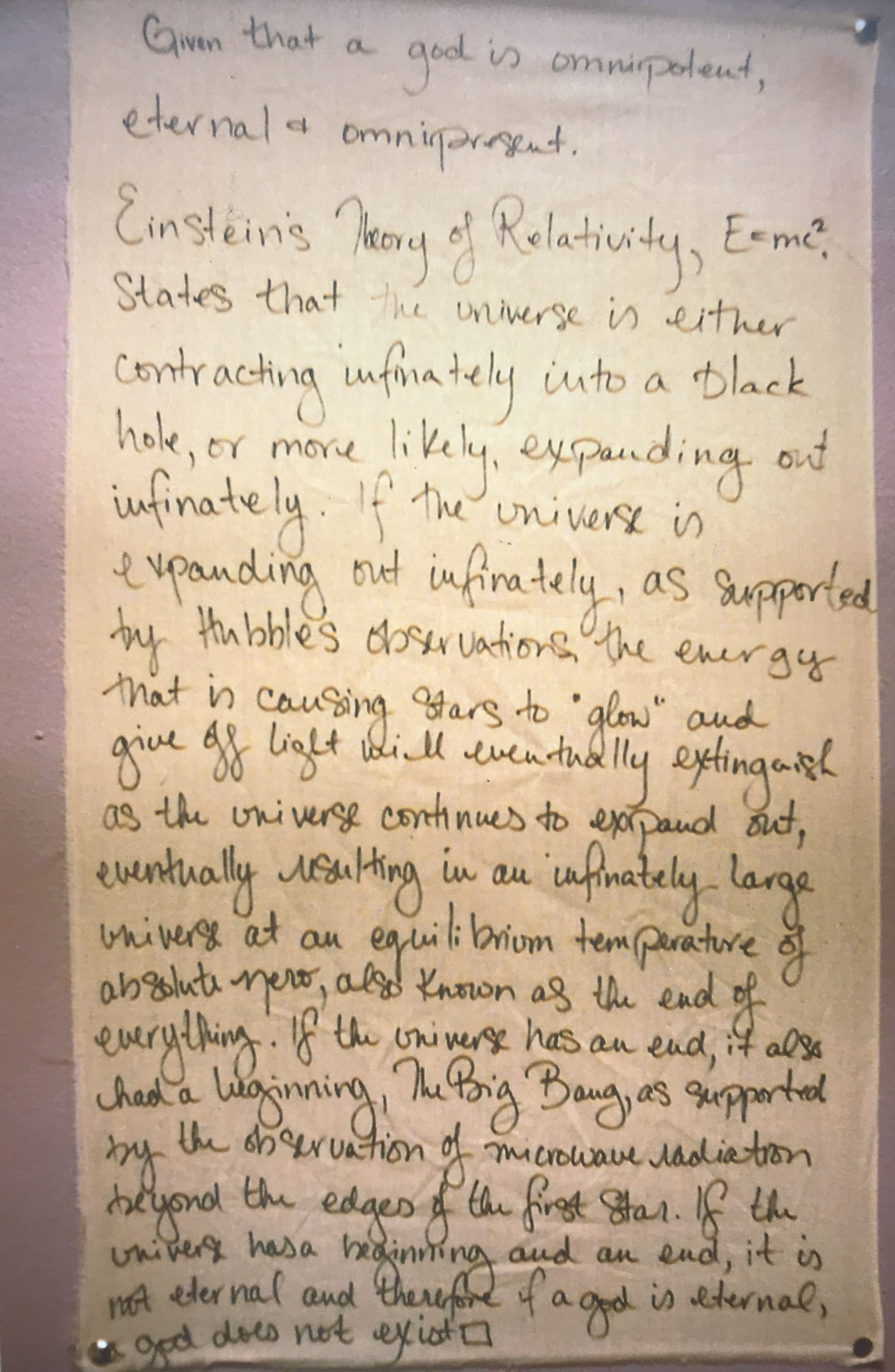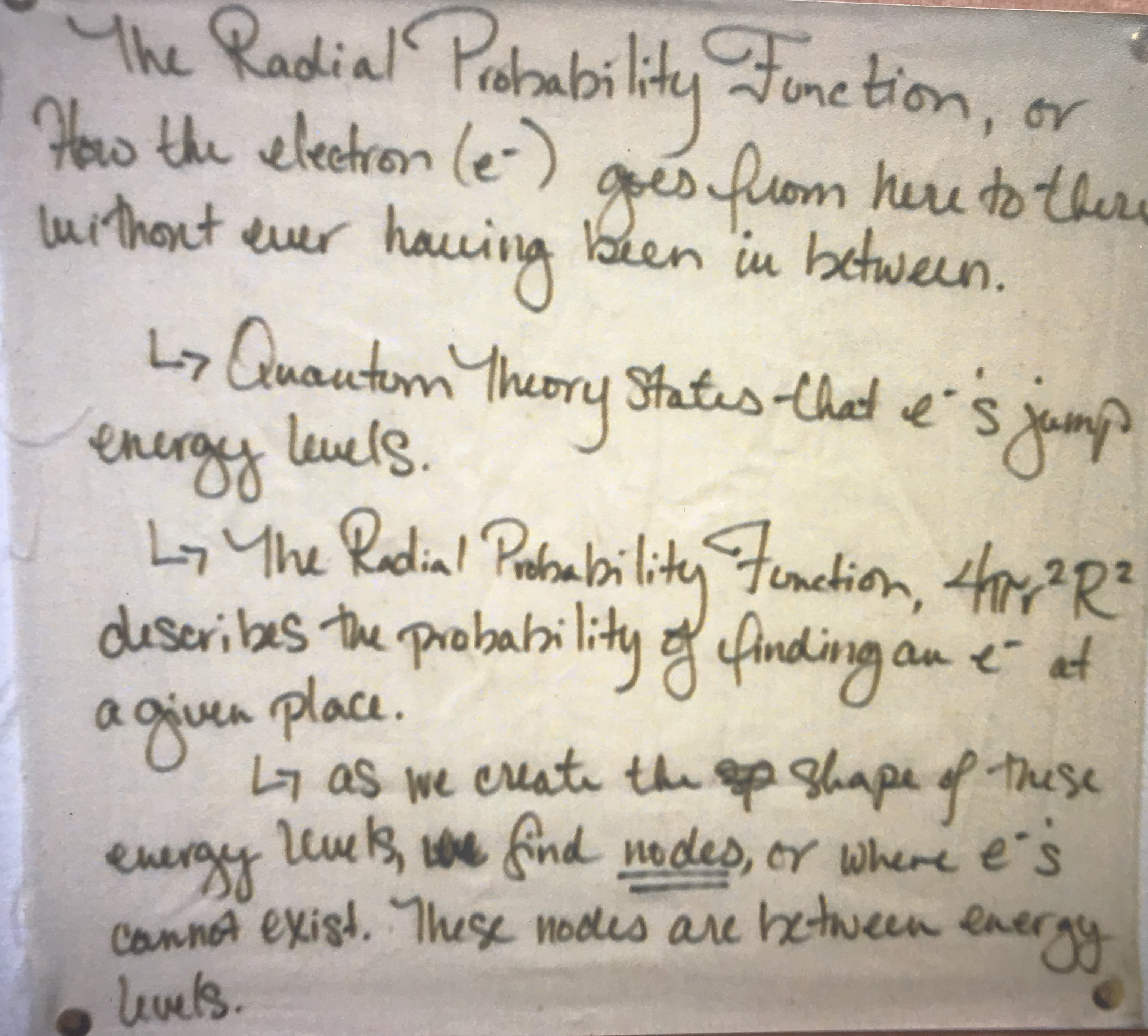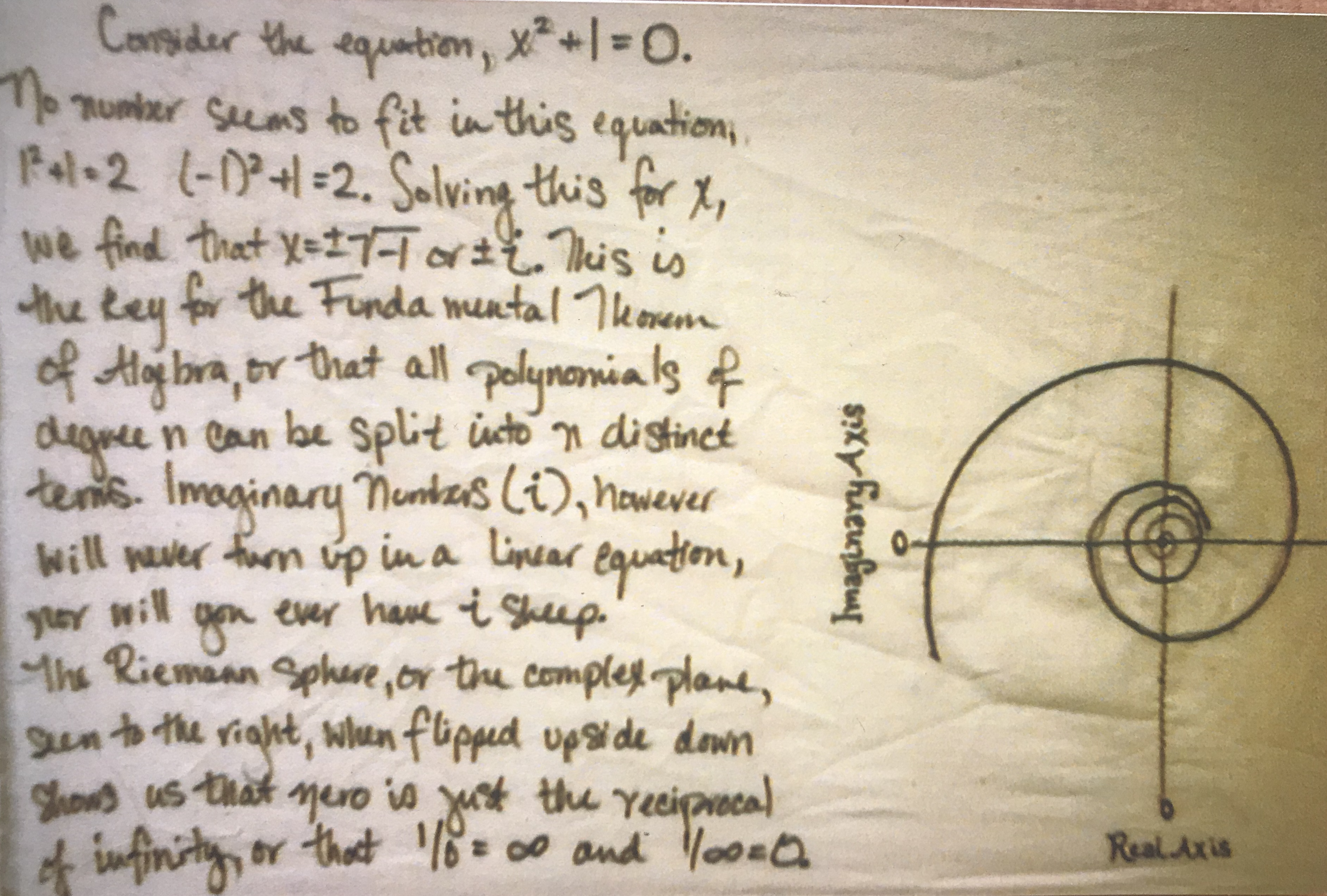Zero's Faith
Images from an art installation exploring the relationship between mathmetics and religion.
Scene Metrospace | East Lansing, MI | Nov 2005-Mar 2006
Images from a pre-smartphone era
There is no God

Given: Gods are omnipotent, eternal, and omnipresent
Einstein's Theory of Relativity, E=mc², states that the universe is either contracting infinitely into a black hole or, more likely, expanding infinitely. If the universe is expanding infinitely, as supported by Hubble's observations, the energy that is causeing stars to "glow" and give off light will eventually extinguish as the universe continues to expand. This will result in an infinitely large universe at an equilibrium temperature of absolute zero. If the universe has an end, it also must have had a beginning, commonly thought of a "The Big Bang", suppported by the observation of microwave radiation beyond the edges of the first star. If the universe has both a beginning and an end, it is not eternal and therefore, if a god is eternal, a god does not exist.
There must be a God

Given: Neither matter nor energy can be created or destroyed
Since matter cannot be created, there bust be a finite amount of matter in the universe.
Since there is a finite amount of matter in the universe, it must be of finite size.
Since the universe is of finite site, there must be something larger than the universe which is not part of the universe.
To recap: The universe is infinitely large. Let's let the universe =n. If the universe if infinitely large, there must be an n+1 term within the infinitely large set, and therefore, something larger).
Since there is something larger than the universe, which is not the universe, it cannot be mortal. If something exists outside the universe which is not mortal, it must be divine.
Since the divine exists, it must be a god.
Where the e- doesn't exist

Quantum Theory states that electrons jump energy leverl.
The Radial Probability Function 4𝛑r²R² describes the probability of finding an electorn at a given place.
As we create the shape of these energy levels, we find nodes, or locations where electrons cannot exist. These nodes exist between the energy levels.
Consider the equation, x² + 1 = 0

No number seems to fit this equation, 1² + 1 = 2. Solving this equation for x, we find that x± √-1 or i. This is the key for the Fundamental Theorem of Algebra, or that all polynomials of degree n can be split into n distinct terms. However, imaginary numbers (i) will never turn up in a linear equation, nor will you ever have i sheep. The Reimann sphere, or the complex plane (seen to the right), when flipped upside down, shows us that zero is just the reciprocal of infinity. And therefore, 1/∞ = 0 and 1/0 = ∞.


